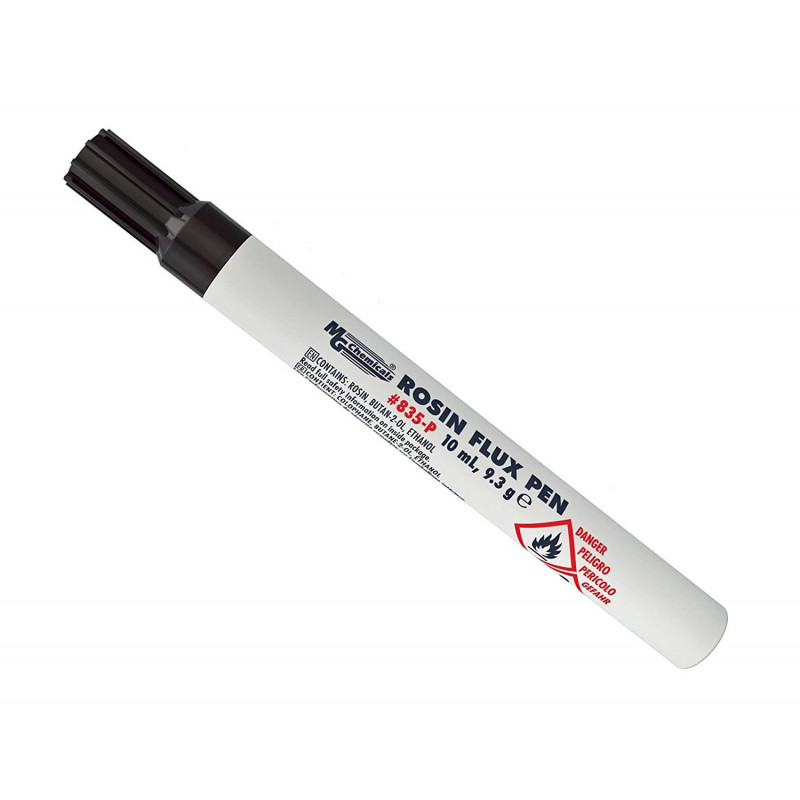
IPC classification is usually ROM0, ROM1, ROH0, or ROH1. RA flux has similar and higher activity than RMA for moderately and highly oxidized surfaces. Rosin activated (RA) flux consists of rosin, solvent, and aggressive activators. Residue may be removed with an appropriate solvent. Many RMA fluxes pass Surface Insulation Resistance (SIR) testing as a NC flux. Cleaning requirements will be based on the activity of the flux and the product it is used on. Most are non-corrosive and nonconductive. IPC classification is usually ROL0, ROL1, ROM0, or ROM1. Most RMA flux is fairly low in activity and best suited to easily solderable surfaces. Rosin mildly activated (RMA) flux consists of rosin, solvent, and a small amount of activator. Some, but not all, NC fluxes are more difficult to remove than RMA fluxes. NC residue is clear, hard, non-corrosive, non-conductive, and is designed to be left on many types of assemblies. IPC classification is usually ROL0 or ROL1. NC flux typically has low-to-moderate activity and is suited to easily solderable surfaces. No-Clean (NC) flux consists of rosin, solvent, and a small amount of activator. R residue is hard, non-corrosive, non-conductive and may be left on many types of assemblies. Rosin flux has very low activity and is suited only to clean and easy-to-solder surfaces. Rosin (R) flux consists of rosin and solvent. This new category of flux is defined by non-tacky residue and compliance with a Surface Insulation Resistance (SIR) test to a value of 1x108Ω.Įach of the five flux categories can be described in brief by noting their activity, the physical qualities of their residue, and the cleaning methods that may be used in their removal. In addition, the IPC standard added a category of flux called No Clean. RO stands for rosin, the L is for low activity and the number 0 is for no detectable halides. Example: A halide-free, rosin based solder paste with low activity is categorized as ROL0. These four characters describe the product in terms of material type, including but not limited to such categories as rosin and inorganic, along with an approximation of activity level and halide content. The system uses four characters to describe any flux as published in J-STD-004.

Each category of flux is available with a variety of activity levels, with the limits of each defined by applicable test results.

In most cases, the AC name has been replaced in industry with WS for Water Soluble. The names are Rosin (R), Rosin or Resin Mildly Activated (RMA), and Rosin or Resin Activated (RA), and non-rosin or non-resin (AC). There are four categories of flux to choose from as defined by Military Specification QQ-S-571E. The following summary is a short explanation of how specifications affected the categories. Industry convention includes five basic categories of fluxes to choose from: R, RMA, RA, NC, and WS. If they aren’t removed with a cleaning process, the residues can draw in ambient moisture from the air and lead to corrosion of component leads, and PCB contacts.Both specifications and industry usage have contributed to current naming conventions for fluxes. Long-life durable goods may fall somewhere in-between, with cleaning a requirement, but without the rigid testing and controls.įlux residues left on electronic circuit boards are acidic. In that example, cleaning will be required after assembly and any subsequent rework, and the process will be thoroughly tested for effectiveness and repeatability. On the other end of the scale, requirements for pacemaker electronics, where board failure could directly lead to death, are going to be much stricter. In that case, an EMS supplier may use no-clean flux and forgo the cleaning process. For a disposable product like a computer keyboard, nobody loses their life if it stops working. Reliability requirements are generally driven by the nature of the final product.


 0 kommentar(er)
0 kommentar(er)
